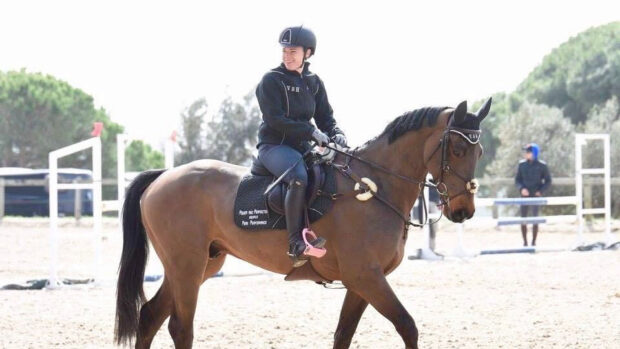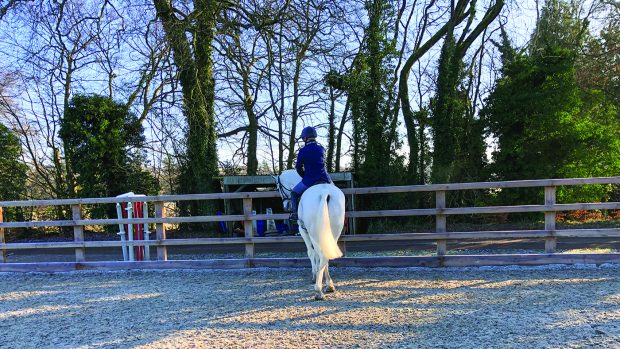The most common fault you see in a jump-off is riders simply increasing the pace instead of taking the shortest route.
It may work at the lower levels, but if you’re approaching a 1.30m vertical, you cannot gallop flat out and hope for the best. The horse must be in balance, with his hocks underneath him, ready to push up off the floor.
You often see amateur riders go very fast and very wide round each turn, whereas more experienced riders will pop over the fence and make a quick turn.
Going too fast on the approach or taking off on a long stride will make it much harder to turn quickly after the fence.
The horse should respond to a slight mid-air shift in the rider’s weight and land ready to make the turn to the next jump.
Likewise, the rider needs to avoid collapsing in their upper body on landing, so in the first stride they can sit up, look to the next fence and guide the horse around the turn without losing rhythm.
This article forms part of H&H’s new three-part winter training series “Moving up a level”, which kicks off on 25 November with advice from Andy Austin on moving up from newcomers to foxhunter classes, plus Lucy Thompson helps a BE90 rider prepare for BE100 competitions.
Next week: Moving up from novice to intermediate eventing, and novice to elementary dressage
Learn more about jumping



